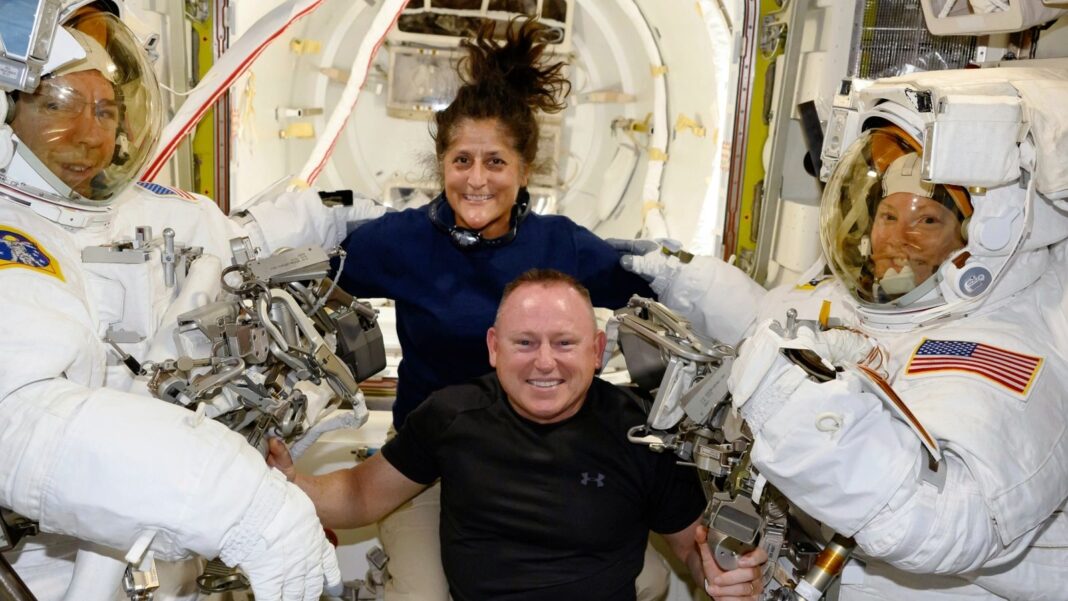Strange noises that were heard coming from the Boeing Starliner currently docked on the International Space Station (ISS) are not serious, says NASA.
Astronaut Butch Wilmore, who has been stuck on the ISS with his colleague Suni since early July because of Starliner’s problems, told mission control he could hear “strange” sounds coming from the spacecraft over the weekend.
“I don’t know what’s making it,” he said to his colleagues back on Earth.
He asked them to “scratch your heads and see if you can figure out what’s going on”, asking them to “call us if you figure it out”.
Mission control noted it sounded like a “pulsing noise, almost like a sonar ping”.
Now, NASA has confirmed the noise has stopped and is not anything to worry about.
“A pulsing sound from a speaker in Boeing’s Starliner spacecraft heard by NASA astronaut Butch Wilmore aboard the International Space Station has stopped,” said the agency in a statement.
“The feedback from the speaker was the result of an audio configuration between the space station and Starliner.”

NASA astronauts Suni Williams, left, and Butch Wilmore before blasting off in Boeing’s Starliner in July. Pic: NASA
The audio system in the space station connects multiple spacecraft and modules.
“It is common to experience noise and feedback,” said NASA.
Crucially, the space agency said the noises will have no impact on the crew or space station operations, including Friday’s planned departure of Starliner from the ISS.
More from science and technology:
UK’s first ‘teacherless’ AI classroom set to open in London
Top tips for budding night-sky photographers
The beleaguered spacecraft has been stuck at the space station since July. It was the first manned trip for Boeing’s Starliner, which has been mired in difficulties since its inception.
Please use Chrome browser for a more accessible video player

0:52
Astronauts stuck until February
But because of multiple system failures, the spacecraft is unable to bring home the two astronauts it ferried up there.

Keep up with all the latest news from the UK and around the world by following Sky News
Instead, Butch Wilmore and Suni Williams will catch a lift with a SpaceX craft in February 2025.
They only expected to be up there for eight days; by the time they leave, it will have been almost eight months.
The spacecraft itself is expected to make its way back to Earth from Friday, although it will not be carrying any astronauts.







